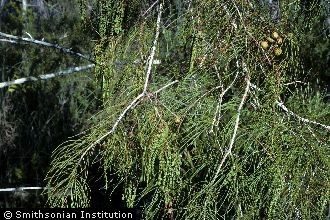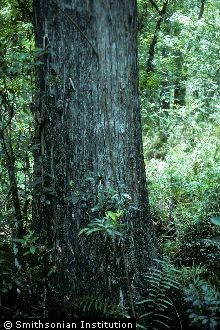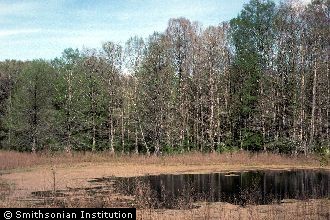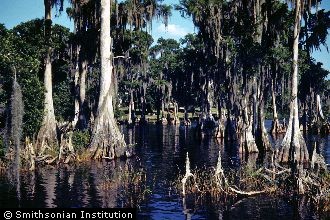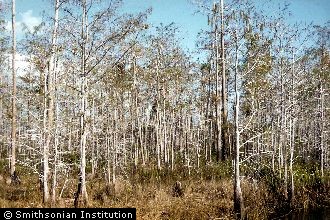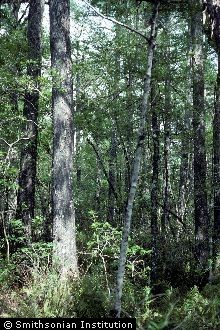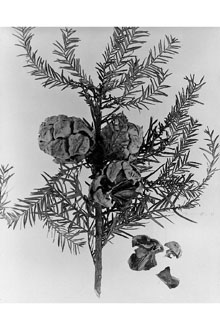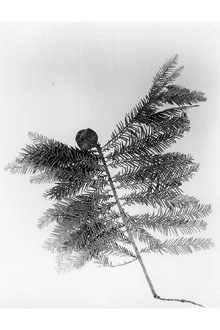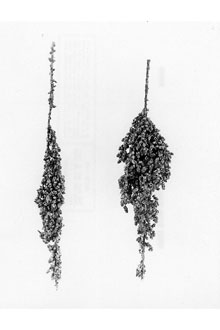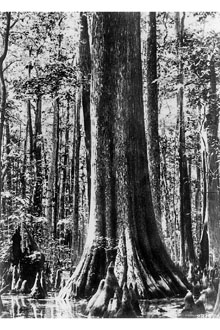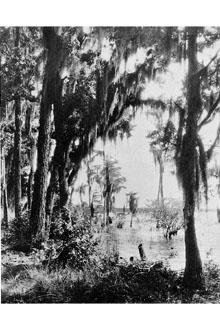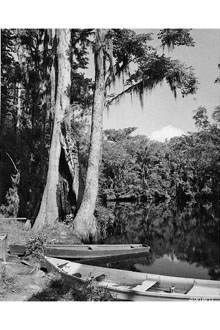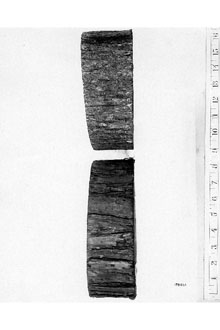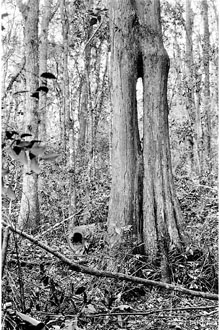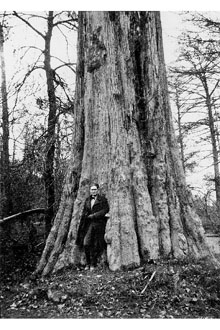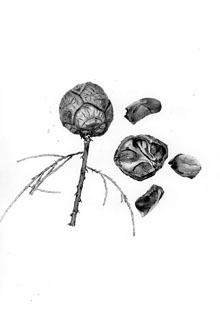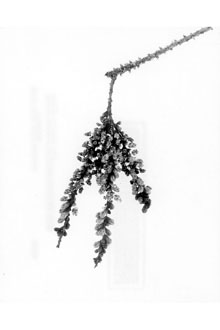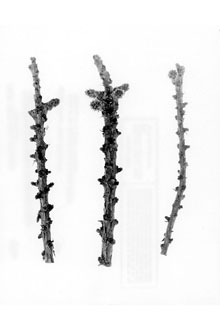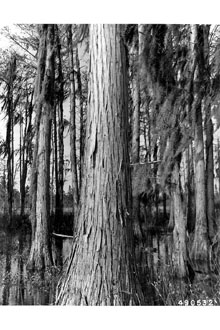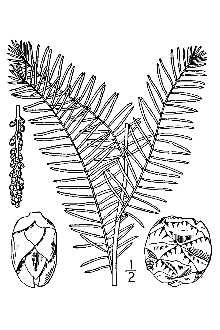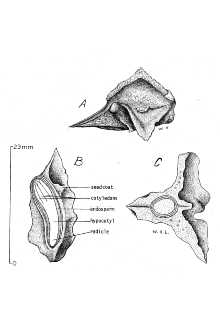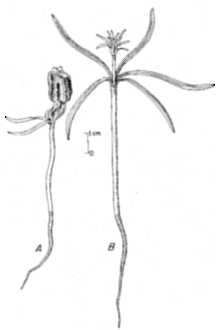Bald Cypress
Scientific Name: Taxodium distichum (L.) Rich.
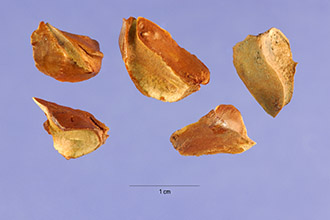
| General Information | |
|---|---|
| Usda Symbol | TADI2 |
| Group | Gymnosperm |
| Life Cycle | Perennial |
| Growth Habits | Tree |
| Native Locations | TADI2 |
Plant Guide
Alternative Names
Southern-cypress, swamp-cypress, red-cypress, yellow-cypress, white-cypress, tidewater red-cypress, gulf-cypress
Uses
Erosion Control: Riverine swamps of bald cypress reduce damage from floods and act as sediment and pollutant traps as they cause floodwaters to spread out, slow down, and infiltrate the soil, Timber: Bald cypress wood is valuable for building construction, fence posts, planking in boats, river pilings, doors, blinds, flooring, shingles, garden boxes, caskets, interior trim and cabinetry, Wildlife: Wild turkey, wood ducks, evening grosbeak, squirrels, waterfowl and wading birds eat Bald cypress seeds, Cypress domes provide unique watering places for a variety of birds and mammals and breeding sites for frogs, toads, salamanders and other reptiles, Yellow-throated warblers forage in the Spanish moss often found hanging on the branches, Its tops provide nesting sites for bald eagles, ospreys, herons and egrets, Use soil moisture sensors to measure the soil moisture of Bald Cypress., Site Rehabilitation: It has potential for rehabilitating margins of surface-mined lakes, Cypress domes can serve as tertiary sewage treatment facilities for improving water quality and recharging groundwater, Beautification: This species has been planted as a water tolerant tree species used for shading and canopy closure in mosquito control programs, It has been successfully planted throughout its range as an ornamental and along roadsides,
Status
Please consult the PLANTS Web site and your State Department of Natural Resources for this plant’s current status, such as, state noxious status, and wetland indicator values. © J.S. Peterson USDA, NRCS, NPDC
Description
Cypress Family (Cupressaceae). Bald cypress is a large, slow-growing but long-lived, deciduous conifer, which frequently reaches 100 to 120 feet in height and 3 to 6 feet in diameter. Its trunk is massive, tapered, and buttressed. The leaves are alternate, linear, and flat with blades generally spreading around the twig. The bark is thin and fibrous with an interwoven pattern of narrow flat ridges and narrow furrows. It is monoecious with its male and female flowers forming slender tassle-like structures near the edge of the branchlets. It develops a taproot as well as horizontal roots that lie just below the surface and extend 20 to 50 feet before bending down. It develops knees that grow above water providing additional support.
Distribution
Bald cypress is widely distributed along the Atlantic Coastal Plain from southern Delaware to southern Florida, westward along the lower Gulf Coast Plain to southeastern Texas. Inland, it grows along streams of the southeastern states and north in the Mississippi valley to southeastern Oklahoma, southeastern Missouri, southern Illinois, and southwestern Indiana.
Adaptation
Bald cypress is generally restricted to very wet soils consisting of muck, clay, or fine sand where moisture is abundant and fairly permanent. It is usually found on flat or nearly flat topography at elevations less than 100 feet above sea level. Its thin bark offers little protection against fire and during years of drought when swamps are dry, fire kills great numbers of cypress.
Establishment
Either seeds or sprouts can accomplish bald cypress stands. Seeds are produced annually and good seed production occurs about every three years. Seeds are dispersed more frequently by floodwaters. Under swamp conditions, the best seed germination generally takes place on a sphagnum moss or a wet-muck seedbed. On better-drained soils, seed usually fails to germinate due to lack of surface water. Soil saturated for 1 to 3 months after seedfall is required for germination. Seedlings require light for good growth, thus control of competing vegetation is necessary. Bald cypress will produce vigorous sprouts from the stumps of both young and old trees, following disturbance.
Management
The best management practice for regenerating this species is canopy thinning. Through thinning, competition is controlled and overhead light is provided for newly germinated seedlings. Nutria, a swamp rodent, often clips or uproots newly planted seedlings before the root systems are fully established, thus killing them. Control of nutria population is necessary. Severe fire after logging or drainage destroys seeds and roots in the soil, favoring willows and hardwoods to take over.
Pests
Brown pocket rot known as “pecky cypress” which is caused by the fungus Stereum taxodi attacks the heartwood. The forest tent caterpillar (Malacosma disstria) and fruit-tree leafroller (Archips argyrospila) larvae web and feed on needles causing dieback and eventually death. Cultivars, Improved and Selected Materials (and area of origin) Readily available from nurseries within its range. Contact your local Natural Resources
Conservation
Service (formerly Soil Conservation Service) office for more information. Look in the phone book under ”United States Government.” The Natural Resources Conservation Service will be listed under the subheading “Department of Agriculture.”
Fact Sheet
Alternate Names
southern-cypress, swamp-cypress, red-cypress, yellow-cypress, white-cypress, tidewater red-cypress, gulf-cypress
Uses
Erosion Control: Riverine swamps of bald cypress reduce damage from floods and act as sediment and pollutant traps as they cause floodwaters to spread out, slow down, and infiltrate the soil. Timber: Its wood is valuable for building construction, fence posts, planking in boats, river pilings, doors, blinds, flooring, shingles, garden boxes, caskets, interior trim and cabinetry. Wildlife: Its seeds are eaten by wild turkey, wood ducks, evening grosbeak, squirrels, waterfowl, and wading birds. Cypress domes provide unique watering places for a variety of birds and mammals and breeding sites for frogs, toads, salamanders, and other reptiles. Yellow-throated warblers forage in the Spanish moss often found hanging on the branches. Its tops provide nesting sites for bald eagles, ospreys, herons, and egrets. Site Rehabilitation: It has potential for rehabilitating margins of surface-mined lakes. Cypress domes can serve as tertiary sewage treatment facilities for improving water quality and recharging groundwater. Beautification: This species has been planted as a water tolerant tree species used for shading and canopy closure in mosquito control programs. It has been successfully planted throughout its range as an ornamental and along roadsides.
Status
Please consult the PLANTS Web site and your State Department of Natural Resources for this plant’s current status (e,g, threatened or endangered species, state noxious status, and wetland indicator values), , Use soil moisture sensors to measure the soil moisture of Bald Cypress.
Description
Bald cypress is a large, slow-growing but long-lived, deciduous conifer, which frequently reaches 100 to 120 feet in height and 3 to 6 feet in diameter. Its trunk is massive, tapered and buttressed. The leaves are alternate, linear and flat with blades generally spreading around the twig. The bark is thin and fibrous with an interwoven pattern of narrow flat ridges and narrow furrows. Its male and female flowers form slender tassle-like structures near the edge of the branchlets. Bald cypress trees produces cone fruit, and there are approximately 5,200 seeds per pound. It develops a taproot as well as horizontal roots that lie just below the surface and extend 20 to 50 feet before bending down. It develops knees that grow above water providing additional support.
Adaptation and Distribution
Distribution
Distribution
Bald cypress is generally restricted to very wet soils consisting of muck, clay or fine sand where moisture is abundant and fairly permanent. It is usually found on flat or nearly flat topography at elevations less than 100 feet above sea level. Its thin bark offers little protection against fire and during years of drought when swamps are dry, fire kills great numbers of cypress. Bald cypress is widely distributed along the Atlantic Coastal Plain from southern Delaware to southern Florida, westward along the lower Gulf Coast Plain to southeastern Texas. Inland, it grows along streams
Establishment
Establishment of bald cypress stands can be accomplished by either seeds or sprouts. Seeds are produced annually and good seed production occurs about every 3 years. Seeds are dispersed more frequently by flood waters. Under swamp conditions, the best seed germination generally takes place on a sphagnum moss or a wet-muck seedbed. On better drained soils, seed usually fails to germinate due to lack of surface water. Soil saturated for 1 to 3 months after seedfall is required for germination. Seedlings require light for good growth, thus control of competing vegetation is necessary. Bald cypress will produce vigorous sprouts from the stumps of both young and old trees, following disturbance.
Management
The best management practice for regenerating this species is canopy thinning. Through thinning, competition is controlled and overhead light is provided for newly germinated seedlings. Nutria, a swamp rodent, often clips or uproots newly planted seedlings before the root systems are fully established, thus killing them. Control of nutria population is necessary. Severe fire after logging or drainage destroys seeds and roots in the soil, favoring willows and hardwoods to take over.
Plant Traits
Growth Requirements
| Temperature, Minimum (°F) | -18 |
|---|---|
| Adapted to Coarse Textured Soils | Yes |
| Adapted to Fine Textured Soils | Yes |
| Adapted to Medium Textured Soils | Yes |
| Anaerobic Tolerance | High |
| CaCO3 Tolerance | None |
| Cold Stratification Required | Yes |
| Drought Tolerance | Low |
| Fertility Requirement | Medium |
| Fire Tolerance | Low |
| Frost Free Days, Minimum | 160 |
| Hedge Tolerance | None |
| Moisture Use | High |
| pH, Maximum | 6.0 |
| pH, Minimum | 4.5 |
| Planting Density per Acre, Maxim | 800 |
| Planting Density per Acre, Minim | 300 |
| Precipitation, Maximum | 65 |
| Precipitation, Minimum | 40 |
| Root Depth, Minimum (inches) | 40 |
| Salinity Tolerance | High |
| Shade Tolerance | Intermediate |
Morphology/Physiology
| Bloat | None |
|---|---|
| Toxicity | None |
| Resprout Ability | Yes |
| Shape and Orientation | Conical |
| Active Growth Period | Spring and Summer |
| C:N Ratio | High |
| Coppice Potential | Yes |
| Fall Conspicuous | Yes |
| Fire Resistant | No |
| Flower Color | Purple |
| Flower Conspicuous | No |
| Foliage Color | Green |
| Foliage Porosity Summer | Dense |
| Foliage Porosity Winter | Moderate |
| Foliage Texture | Fine |
| Fruit/Seed Conspicuous | No |
| Nitrogen Fixation | None |
| Low Growing Grass | No |
| Lifespan | Long |
| Leaf Retention | No |
| Known Allelopath | No |
| Height, Mature (feet) | 130.0 |
| Height at 20 Years, Maximum (fee | 45 |
| Growth Rate | Rapid |
| Growth Form | Single Stem |
| Fruit/Seed Color | Brown |
Reproduction
| Vegetative Spread Rate | None |
|---|---|
| Small Grain | No |
| Seedling Vigor | Low |
| Fruit/Seed Period Begin | Summer |
| Seed Spread Rate | Slow |
| Seed per Pound | 5200 |
| Propagated by Tubers | No |
| Propagated by Sprigs | No |
| Propagated by Sod | No |
| Propagated by Seed | Yes |
| Propagated by Corm | No |
| Propagated by Container | Yes |
| Propagated by Bulb | No |
| Propagated by Bare Root | Yes |
| Fruit/Seed Persistence | Yes |
| Fruit/Seed Period End | Fall |
| Fruit/Seed Abundance | Low |
| Commercial Availability | Routinely Available |
| Bloom Period | Mid Spring |
| Propagated by Cuttings | No |
Suitability/Use
| Veneer Product | No |
|---|---|
| Pulpwood Product | No |
| Post Product | Yes |
| Palatable Human | No |
| Nursery Stock Product | Yes |
| Naval Store Product | Yes |
| Lumber Product | Yes |
| Fuelwood Product | Medium |
| Fodder Product | No |
| Christmas Tree Product | No |
| Berry/Nut/Seed Product | No |

